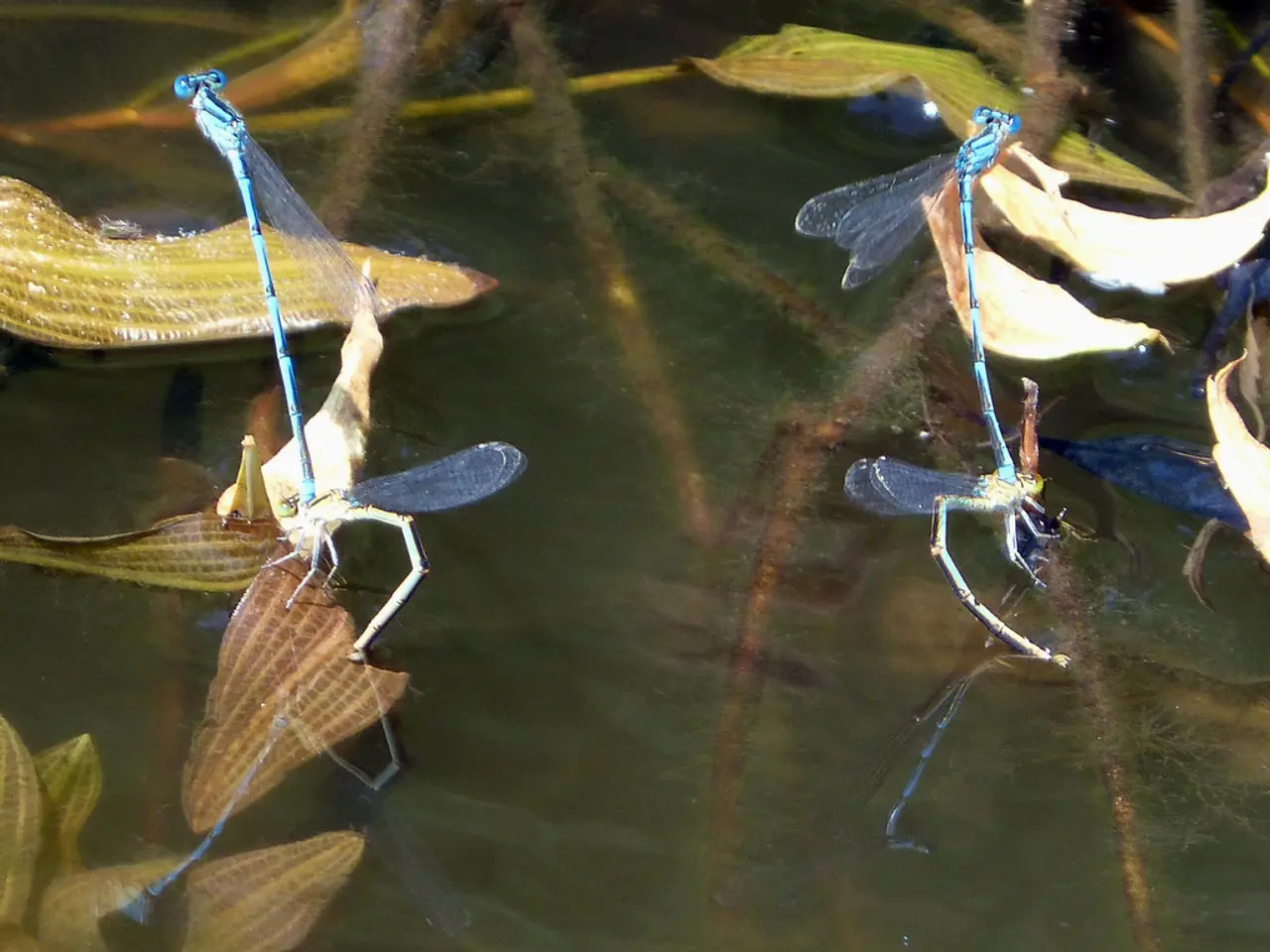Terrarium Maintenance: Eliminating Mold with Springtails (Permanently)
In the intricate world of bioactive terrariums, there exists a tiny, wingless creature that plays a crucial role in maintaining a healthy and balanced ecosystem. These are the springtails, often referred to as 'omnivorous detritivores'.
Springtails, scientifically known as Collembolas, are the true heroes of bioactive terrariums. They are versatile and increasingly researched, making them an essential component of these miniature ecosystems.
The primary food source for springtails in a terrarium is fungi, particularly mold. By feeding on decaying organic matter, mold, fungi, and animal waste, they act as nature's clean-up crew, keeping the terrarium clean and preventing harmful bacteria or mold overgrowth.
One of the most significant benefits of using springtails is their role in mold control. By consuming mold and fungi, they help prevent mold growth, which can otherwise damage plants or harm inhabitants in a terrarium. This keeps the environment odor-free and healthier for all residents.
Moreover, springtails contribute to a stable micro-ecosystem by recycling nutrients back into the substrate, which benefits plant growth and overall terrarium health. This process supports biodiversity and ecosystem balance, making bioactive setups more self-sustaining.
Springtails are low-maintenance and require little care. A single starter culture is typically enough to seed a terrarium with these tiny creatures. In closed terrariums, they can thrive for years with little intervention.
Springtails are particularly beneficial in humid terrariums, with both tropical and temperate species available. For desert-style animal vivariums, they could be a good fit for managing animal waste.
When it comes to adding springtails to a fresh terrarium, they may need a tiny bit of supplementation in the early stages. A light sprinkle of Superfood Powder is enough to provide the necessary nutrients.
However, springtails and open terrariums are rarely a good fit due to their need for moist, humid environments. When shipped in substrate, they can be difficult to separate, requiring direct addition to the substrate. On the other hand, springtails shipped in calcium-bearing clay are easy to transfer to a terrarium.
With over 9000 springtail species existing worldwide, these tiny creatures can be found in various environments, from woodland hills to icy caves. Among these, the Temperate White Springtails (Folsomia candida) are commonly sold because they are the most tried-and-tested species in the hobby.
In conclusion, the benefits of using springtails in bioactive terrarium setups are significant. They improve terrarium cleanliness, control mold, support nutrient cycles, and help maintain a healthy bioactive environment for plants and animal inhabitants alike. These unsung heroes are indeed the cornerstone of a thriving, self-sustaining bioactive terrarium.
- As scientific research delves deeper into the complexities of bioactive terrarium setups, the importance of springtails, specifically Collembolas, in these micro-ecosystems continues to be thoroughly examined.
- The health-and-wellness benefits of bioactive terrariums are greatly amplified by the presence of springtails, as they help maintain a clean and balanced environment that prevents harmful bacteria or mold overgrowth.
- Fitness-and-exercise aficionados may find inspiration in the industriousness of springtails, whose roles in eating decaying organic matter, fungi, and animal waste contribute to a more active and vibrant terrarium ecosystem.
- In the realm of environmental science, springtails' ability to control mold growth and manage waste in a variety of terrariums, including tropical and desert-style vivariums, showcases their resilience and adaptability to different climates.
- Mental-health practitioners could draw parallels between the stress-reducing effects of spending time in nature, and the calming presence of springtails in a bioactive terrarium, thus promoting a sense of peace and tranquility.
- Skin-care enthusiasts might find a unique interest in the relationship between springtails and the holistic health of terrarium plants, as these tiny creatures play a crucial role in recycling nutrients back into the substrate which supports plant growth.
- Therapies-and-treatments for various ailments can be found within the bioactive terrarium ecosystem, as springtails help provide a stable and self-sustaining environment for plants and animal inhabitants.
- Nutrition experts may appreciate the value of springtails in the food-and-drink industry, as the research into their dietary needs and preferences could lead to the development of innovative and sustainable food sources.
- CBD, a popular compound in the wellness community, could potentially have synergistic effects when combined with the bioactive terrarium ecosystem, as both share the goal of promoting health and wellness.
- Home-and-garden hobbyists, pet owners, travelers, shoppers, sports enthusiasts, and those curious about space-and-astronomy would all find a unique connection and educational value in learning about the diverse world of springtails and their importance in bioactive setups.




